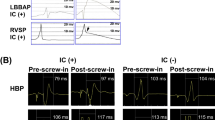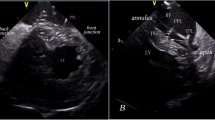Abstract
Background
Left bundle branch pacing (LBBP) is a novel near-physiological pacing method that still lacks quantitative criteria to guide the selection of lead-implanted sites to enhance the success likelihood of lead deployments. This study aimed to quantitatively analyze the relationships of LBBP success likelihood to the distribution of lead-implanted sites and the lead-localization-pacing electrocardiographic (ECG) features.
Methods
All the lead-implanted sites in patients with finally successful LBBP were enrolled for analysis, including successful and failed sites. A novel coordinate system was invented to describe the sites’ distribution as longitudinal distance (longit-dist) and lateral distance (lat-dist). Corrected distance parameters were generated to eliminate the cardiac dimension variations. The lead-localization-pacing ECG parameters were also collected, such as paced QRS duration (locat-QRSd), left ventricular activation time (locat-LVAT), LVAT/QRSd ratio (locat-LVAT/QRSd), and QRS directions.
Results
A total of 94 patients with 105 successful sites and 93 failed sites were enrolled. Longit-dist and corrected longit-dist of successful sites were significantly longer, while locat-QRSd and locat-LVAT were shorter and locat-LVAT/QRSd was lower than failed sites. There was a positive dose–response relationship between LBBP success likelihood and corrected longit-dist with a cut-off of 26.95 mm, whereas there were negative dose–response relationships of LBBP success likelihood to locat-QRSd, locat-LVAT, and locat-LVAT/QRSd with the cut-offs of 142 ms, 92 ms, and 64.7%, respectively. Downward QRS direction in II/III ECG leads was also associated with successful LBBP.
Conclusion
Longit-dist, locat-QRSd, locat-LVAT, and locat-LVAT/QRSd were quantitative parameters to guide the selection of lead-implanted sites during LBBP implantation.
Graphical abstract
Quantitative distance and electrocardiographic parameters for lead-implanted site selection to enhance the success likelihood of left bundle branch pacing. LBBP, left bundle branch pacing; Longit-dist, longitudinal distance; CL-apex-dist, distance from contraction line to apex; LBBB, left bundle branch block; IVCD, intraventricular conduction delay; Locat-QRSd, lead-localization-pacing QRS duration; Locat-LVAT, lead-localization-pacing left ventricular activation time; Locat-LVAT/QRSd, lead-localization-pacing LVAT/QRSd ratio.





Similar content being viewed by others
Data availability
The data underlying this article cannot be shared publicly due to the data confidentiality policy of the National Center for Cardiovascular Diseases (China).
Code availability
The codes used are available from the corresponding author upon reasonable request.
References
Sharma AD, Rizo-Patron C, Hallstrom AP et al (2005) Percent right ventricular pacing predicts outcomes in the DAVID trial. Heart Rhythm 2:830–834. https://doi.org/10.1016/j.hrthm.2005.05.015
Zhang S, Zhou X, Gold MR (2019) Left bundle branch pacing. J Am Coll Cardiol 74:3039–3049. https://doi.org/10.1016/j.jacc.2019.10.039
Huang W, Wu S, Vijayaraman P et al (2020) Cardiac resynchronization therapy in patients with nonischemic cardiomyopathy using left bundle branch pacing. JACC Clin Electrophysiol 6:849–858. https://doi.org/10.1016/j.jacep.2020.04.011
Li Y, Yan L, Dai Y et al (2020) Feasibility and efficacy of left bundle branch area pacing in patients indicated for cardiac resynchronization therapy. Europace 22:ii54–ii60. https://doi.org/10.1093/europace/euaa271
Zhang W, Huang J, Qi Y et al (2019) Cardiac resynchronization therapy by left bundle branch area pacing in patients with heart failure and left bundle branch block. Heart Rhythm 16:1783–1790. https://doi.org/10.1016/j.hrthm.2019.09.006
Huang W, Chen X, Su L et al (2019) A beginner’s guide to permanent left bundle branch pacing. Heart Rhythm 16:1791–1796. https://doi.org/10.1016/j.hrthm.2019.06.016
Jiang H, Hou X, Qian Z et al (2020) A novel 9-partition method using fluoroscopic images for guiding left bundle branch pacing. Heart Rhythm 17:1759–1767. https://doi.org/10.1016/j.hrthm.2020.05.018
Liu X, Niu H-X, Gu M et al (2021) Contrast-enhanced image-guided lead deployment for left bundle branch pacing. Heart Rhythm S1547–5271(21):00353–00362. https://doi.org/10.1016/j.hrthm.2021.04.015
Chen K, Li Y (2019) How to implant left bundle branch pacing lead in routine clinical practice. J Cardiovasc Electrophysiol 30:2569–2577. https://doi.org/10.1111/jce.14190
Lin J, Hu Q, Chen K et al (2021) Relationship of paced left bundle branch pacing morphology with anatomic location and physiological outcomes. Heart Rhythm 18:946–953. https://doi.org/10.1016/j.hrthm.2021.03.034
Jastrzębski M, Moskal P, Hołda MK et al (2020) Deep septal deployment of a thin, lumenless pacing lead: a translational cadaver simulation study. Europace 22:156–161. https://doi.org/10.1093/europace/euz270
Strik M, van Deursen CJM, van Middendorp LB et al (2013) Transseptal conduction as an important determinant for cardiac resynchronization therapy, as revealed by extensive electrical mapping in the dyssynchronous canine heart. Circ Arrhythm Electrophysiol 6:682–689. https://doi.org/10.1161/CIRCEP.111.000028
Hayashi Y, Shimeno K, Nakatsuji K, Naruko T (2020) What is the mechanism of narrow paced QRS duration during left bundle branch area pacing? A case report. Eur Heart J Case Rep 4:1–5. https://doi.org/10.1093/ehjcr/ytaa239
Helm PA, Younes L, Beg MF et al (2006) Evidence of structural remodeling in the dyssynchronous failing heart. Circ Res 98:125–132. https://doi.org/10.1161/01.RES.0000199396.30688.eb
Funding
Supported by the National Natural Science Foundation of China (Grant Number 81870260) and the Central Public-Interest Scientific Institution Basal Research Fund: Chinese Academy of Medical Sciences (Internal Grant Number 2018-F01).
Author information
Authors and Affiliations
Contributions
WL, JL, KC and YD came up with the conception and designed the study. Data collection was completed by WL. Data analysis, result interpretation and article drafting were performed by WL. All the authors participated in the LBBP operation, clinical practice and article revisions. The final approval of the submitted version was performed by KC, YD, and SZ.
Corresponding authors
Ethics declarations
Conflict of interest
The authors declare that they have no conflict of interest.
Ethical approval
This work was approved by the Ethics Committee of Fuwai Hospital (Approval No. 2019-1149) and obeyed the Declaration of Helsinki.
Supplementary Information
Below is the link to the electronic supplementary material.
Rights and permissions
About this article
Cite this article
Lu, W., Lin, J., Chen, K. et al. Quantitative distance and electrocardiographic parameters for lead-implanted site selection to enhance the success likelihood of left bundle branch pacing. Clin Res Cardiol 111, 1219–1230 (2022). https://doi.org/10.1007/s00392-021-01965-1
Received:
Accepted:
Published:
Issue Date:
DOI: https://doi.org/10.1007/s00392-021-01965-1




